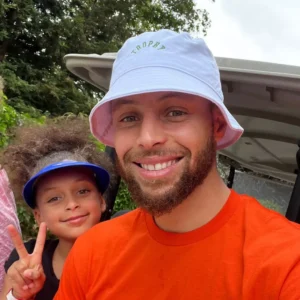Retiring from her career at the age of 32, but for Maria Sharapova, tennis is just like a mountain peak and it’s time for her to conquer a new goal.
To understand why the former world number one retired, we need to find out what broke her.
“I look at pictures of myself, the movements when I’m about to hit the ball or the image of me flying or landing. And I can’t look at it anymore because it makes me cringe. It hurts so much,” she said.
Pain has been a constant companion for Sharapova, one of the most iconic athletes of the 21st century, over the past two years. After serving a doping ban in 2016, the Russian tennis player has been unable to return to the peak of her career, a period when she won five Grand Slams.
Since then, Sharapova has been dealing with recurring pain in her right shoulder and strained muscles in her arm, which at times has left her barely able to hold a racket. But Sharapova has not given up. Instead, she has persevered and called it a great tool to help her overcome the injury crisis and revive her career.
 |
“As you can see, throughout my career, perseverance has been my greatest strength. It’s the best thing,” Sharapova said. “However, I started to feel like it was becoming a weakness, because my stubborn nature led me astray.”
Sharapova was suspended in 2016 for using meldonium, a newly banned drug used to treat heart disease. Sharapova explained that she had been taking it for years due to a family history of diabetes and her own dizziness due to a magnesium deficiency. She claimed she was unaware that meldonium had been added to the World Anti-Doping Agency’s list of banned substances. The arbitration panel later ruled that Sharapova should not be considered a “deliberate cheat”, and her suspension was reduced from two years to 15 months.
In early March 2019, Sharapova confirmed that she had undergone minor shoulder surgery and announced that she would be out for a few weeks. But pushing her limits only caused her more pain. The Russian Doll’s comeback lasted only two seasons and ended with a first-round loss at the 2020 Australian Open to Donna Vekic in January.
After all, Sharapova said, she was left with only the pressure that weighed on her: “For the past six months, fourteen hours a day, I’ve been pretty much focused on taking care of myself. Every time I get ready to go out on the court, I feel like I’m in an ultrasound machine or something, or like I’m in a recovery zone.”
There will be no farewell tournament, as Sharapova asserted. “I don’t think it’s necessary for me to go out there and show the world and all the fans that it’s the last time. Even when I was younger, that’s not what I wanted to do at the end of my career,” the 32-year-old said.
During the flight from Australia to her home in Los Angeles, Sharapova felt it was time to say goodbye to her career. Kobe Bryant’s helicopter crash on January 26 made that even more clear. They had planned to meet, but the tragic accident happened.
For Masha, Bryant was like a “hardcore soundtrack” that inspired her throughout her career. “I think, it seems like we all sometimes consider our careers more important than our lives, but everything is so fragile. And if anything, it shows us what’s really important in life, it’s that I had to think about my future.”
Standing 6ft 1in tall and sporting a trademark high-pitched scream, the Russian has had an extraordinary journey. Had it not been for the Chernobyl nuclear disaster, Sharapova might never have become a tennis star. Her parents, Yuri and Yelena, were living in Gomel (now Belarus) in April 1986, when the nuclear reactor in nearby Chernobyl exploded.
They were evacuated to Nyagan in Siberia. Sharapova was born there in April 1987, but her father moved the family to the warmer Black Sea city of Sochi. There he discovered tennis and passed on his love of the sport to his only daughter. In 1993, when Maria was six, post-Soviet Russia was in turmoil. The Sharapova family fled to Florida with less than $1,000 in Yuri’s pocket. It was the legend Martina Navratilova who had spotted Sharapova’s talent back in Moscow and advised her to train abroad.
It was a risky gamble. But Sharapova, who had been separated from her mother for more than two years due to US visa restrictions, showed remarkable brilliance and talent as she rose to the top of the IMG Academy tennis academy in Bradenton, Florida. “The first thing that struck me when I saw her was how focused she was in training, like the shots in the Wimbledon final,” recalls Max Eisenbud, who later became Sharapova’s agent.
Sharapova shot to stardom with her 2004 Wimbledon title at the age of 17, defeating top seed Serena Williams in the final. Sharapova has won five Grand Slam titles in total, including the 2006 US Open, the 2008 Australian Open and the 2012 and 2014 French Opens, despite her preferred surface being clay. “I feel like a cow on ice,” Sharapova said of playing on clay in 2007 – a rare humorous expression when she plays, to avoid distractions and maintain a competitive mentality.
 |
|
At the age of 17, Sharapova won Wimbledon 2004. Photo: AFP. |
Throughout her career, Sharapova won 36 WTA titles, a 2012 Olympic gold medal and the Fed Cup championship with the Russian team in 2008. Sharapova first became world number one in August 2005 and spent a total of 21 weeks at the top of the WTA rankings.
But Sharapova’s off-court legacy is also admirable. She has been ranked by Forbes as the world’s highest-paid female athlete for 11 consecutive years. Sharapova’s money comes largely from endorsement deals with major brands like Nike and Evian, as well as her own candy line, which reportedly brought in approximately $30 million in 2015 alone.
“She has made the sport more popular by attracting more attention from people,” said the legendary Billie Jean King – one of the founders of the WTA Tour. “Sharapova is not only a great player, but she is also much better off the court.”
After the ban, Sharapova returned to competition in April 2017, much to the dismay of many of her colleagues, especially when she received wildcard tickets to tournaments. They felt it was unfair to give preferential treatment to someone who had just returned from a ban. But Sharapova failed to improve, despite some flashes of brilliance, including a first-round win at the 2017 US Open, defeating second seed Simona Halep, and a title at a minor tournament in China in October of the same year.
Sharapova’s lack of success since her return has led some to speculate that it was due to a lack of meldonium. The Russian has flatly rejected that argument, saying she had been struggling with injuries since before her suspension. “Since I was 21, I’ve had problems with my shoulder,” Sharapova said.
In 2008, Masha underwent her first shoulder surgery to reconnect some torn muscles, and a minor surgery in 2019 to repair a small tear. But the pain in her shoulder did not go away, while additional injuries occurred in both arms. “It basically kept coming back and forth, and I had swelling in my arm. It kept me from lifting my arm, and it started on one side and spread to the other. It felt like I had a splint in my arm.”
Sharapova, now ranked 373rd in the world, has had to play the same way she trains. That is, stretch herself and throw herself into fierce competition while being physically unfit and technically deficient.
Her forehand no longer has the power of her younger days, and Sharapova has instead turned to a backhand. She comes to the net less often and doesn’t have the agility to match rivals like the Williams sisters and Simona Halep. But Sharapova still has a world-class two-handed backhand and is experienced around the baseline. Before her shoulder problems, her heavy serve used to strike fear into opponents.
Above all, Sharapova has something in common with Rafael Nadal. “A girl who knows no fear,” said Robert Lansdorp, one of Sharapova’s childhood coaches, when she made her Indian Wells debut in 2002 at the age of 14.
Years later, others have echoed Lansdorp’s comments. But there are still some challenges Sharapova has not overcome, one of which is Serena Williams – the American who, after two defeats in the 2004 Wimbledon final and the WTA Championships later that year, has not lost again to go 20-2 against Sharapova, and is still playing on the WTA Tour at the age of 38.
There is no doubt that this is the Williams era. Now it is time for Sharapova to enjoy her relationship with British billionaire Alexander Gilkes, while she studies architecture later this year and focuses on her candy business.
 |
|
Doping incidents and constant injuries have prevented Sharapova from returning to the top. Photo: NYT. |
Last weekend, Sharapova went skiing for the first time in Montana. She sent the video to her former training partner, Jannik Sinner, who had promised to become a skier. “He wrote me a letter and told me to keep playing tennis,” Sharapova said, laughing.
But through it all, she remained steadfast. “Look, would I like a sixth, seventh, eighth Grand Slam? Those numbers sound great. But I started my career from zero and now I’ve reached some amazing milestones,” she said.






